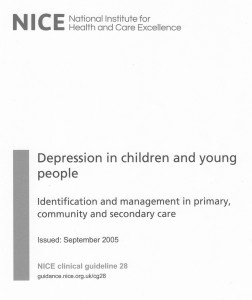 2015 is the year which marks the 10th anniversary of the publication by the National Institute for Health and Clinical Excellence (NICE) of their Clinical Guideline 28 (CG28), entitled Depression in Children and Young People.
2015 is the year which marks the 10th anniversary of the publication by the National Institute for Health and Clinical Excellence (NICE) of their Clinical Guideline 28 (CG28), entitled Depression in Children and Young People.
In Section 1.6 of this document, it states that: “Children and young people with moderate to severe depression should be offered, as a first-line treatment, a specific psychological therapy (individual cognitive behaviour therapy [CBT], interpersonal therapy or shorter-term family therapy); it is suggested that this should be of at least 3 months’ duration.
… If there is no response to a specific psychological therapy within four to six sessions, then review and consider alternative or additional psychological therapies for coexisting problems. Consider combining psychological therapy with Fluoxetine (cautiously in younger children). If combined treatment is not effective within a further six sessions, review and consider more intensive psychological therapy.”
CG28 also provided an explanation why it considered all brands of TCA and SSRI antidepressants unsafe for use with children, with the notable exception of Fluoxetine, also known as Prozac.
“In December 2003, following a review by an Expert Working Group of the Committee on Safety of Medicines (CSM, 2003), the CSM advised that citalopram, escitalopram, fluvoxamine, paroxetine, sertraline, and venlafaxine should not be used as new therapy for the treatment of depression in under 18-year-olds (Duff, 2003c). Despite the lack of a marketing authorisation for fluoxetine in the treatment of major depressive disorder at that time, the CSM advised that the balance of risks and benefits for this drug was favourable.”
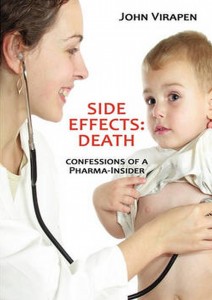 The assertion that Eli Lilly’s Fluoxetine was safer than other, almost identical, brands of SSRI, was regarded with suspicion at the time of its publication. The suspicions were later confirmed by reliable sources such as former Eli Lilly employee John Virapen who, in his book Side Effects: Death (Confessions of a Pharma-insider), stated that “Fluoxetine was not used on children in the clinical studies that were carried out prior to approval.”
The assertion that Eli Lilly’s Fluoxetine was safer than other, almost identical, brands of SSRI, was regarded with suspicion at the time of its publication. The suspicions were later confirmed by reliable sources such as former Eli Lilly employee John Virapen who, in his book Side Effects: Death (Confessions of a Pharma-insider), stated that “Fluoxetine was not used on children in the clinical studies that were carried out prior to approval.”
Moreover, NICE chose to ignore tests that had been carried out in the USA on behalf of the FDA in 2004 which showed that there was no noticeable difference between Fluoxetine and the other SSRIs available.
 The CSM was later re-branded as the Medicines and Healthcare Products Regulatory Agency (MHRA). Although it may claim to be independent, the regulatory body is completely funded and partially staffed by Pharma. The present CEO, Ian Hudson (right), achieved notoriety when, while working for GSK, he attempted unsuccessfully to absolve from blame the antidepressant Paxil (Seroxat) in a lawsuit brought on behalf of the family of Donald Schell. 48 hours after having been prescribed Paxil (Seroxat), Donald shot dead his wife, his daughter and his granddaughter before shooting himself through the head.
The CSM was later re-branded as the Medicines and Healthcare Products Regulatory Agency (MHRA). Although it may claim to be independent, the regulatory body is completely funded and partially staffed by Pharma. The present CEO, Ian Hudson (right), achieved notoriety when, while working for GSK, he attempted unsuccessfully to absolve from blame the antidepressant Paxil (Seroxat) in a lawsuit brought on behalf of the family of Donald Schell. 48 hours after having been prescribed Paxil (Seroxat), Donald shot dead his wife, his daughter and his granddaughter before shooting himself through the head.
 In March 2014, I wrote to the MHRA asking for “information about the intrinsic difference between Prozac and the other SSRIs.” Unsurprisingly, I received no such information, although in their reply I was told that:
In March 2014, I wrote to the MHRA asking for “information about the intrinsic difference between Prozac and the other SSRIs.” Unsurprisingly, I received no such information, although in their reply I was told that:
Several SSRI antidepressants are licensed for use in children:
- Fluoxetine for the treatment of moderate to severe major depressive episode (in combination with psychological therapy) in children aged over eight years and adolescents
- Fluvoxamine for the treatment of obsessive–compulsive disorder in children aged over eight years and adolescents
- Sertraline for the treatment of obsessive–compulsive disorder in children aged over six years and adolescents.
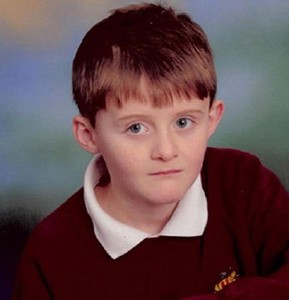 During the 10 years since CG28, an unknown number of children in England and Wales have taken their lives after having been prescribed antidepressants. The youngest of these, as far as I know, was 10-year-old Harry Hucknell (right) from Cumbria who, in September 2010, hanged himself in his bedroom. He had been diagnosed as having ADHD and was subsequently prescribed Ritalin and Prozac.
During the 10 years since CG28, an unknown number of children in England and Wales have taken their lives after having been prescribed antidepressants. The youngest of these, as far as I know, was 10-year-old Harry Hucknell (right) from Cumbria who, in September 2010, hanged himself in his bedroom. He had been diagnosed as having ADHD and was subsequently prescribed Ritalin and Prozac.
In 2014, I came across several inquests in which it was reported that children were prescribed antidepressants before taking their lives.
 The youngest of these was 14-year-old Tom Boomer from Banbury. Tom was prescribed Fluoxetine 11 days before he jumped from a multi-storey car park. The prescribing doctor (who actually increased the dosage after a week or so) claimed bizarrely that the risk of suicide after taking antidepressants was limited to “the first two or three days of use.”
The youngest of these was 14-year-old Tom Boomer from Banbury. Tom was prescribed Fluoxetine 11 days before he jumped from a multi-storey car park. The prescribing doctor (who actually increased the dosage after a week or so) claimed bizarrely that the risk of suicide after taking antidepressants was limited to “the first two or three days of use.”
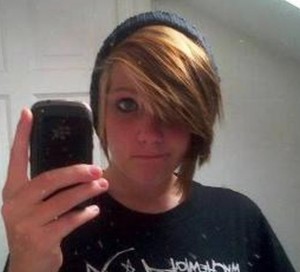 Jasmine Clarkson from Gloucestershire was also 14 when she hanged herself from a tree in a local park. On her body she had written: “The voices made me do it.” Four months earlier, she had taken an overdose of her medication. She was being treated by her GP, but declined an offer of counselling.
Jasmine Clarkson from Gloucestershire was also 14 when she hanged herself from a tree in a local park. On her body she had written: “The voices made me do it.” Four months earlier, she had taken an overdose of her medication. She was being treated by her GP, but declined an offer of counselling.
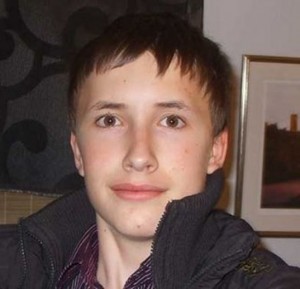 15-year-old George Werb was re-prescribed Fluoxetine at a branch of the Priory, even though he had previously had an adverse reaction to the drug. He stepped in front of a train on the line that ran near his home in Devon. The prescribing doctor told the inquest that there was “no significant evidence” that Fluoxetine caused suicidal tendencies.
15-year-old George Werb was re-prescribed Fluoxetine at a branch of the Priory, even though he had previously had an adverse reaction to the drug. He stepped in front of a train on the line that ran near his home in Devon. The prescribing doctor told the inquest that there was “no significant evidence” that Fluoxetine caused suicidal tendencies.
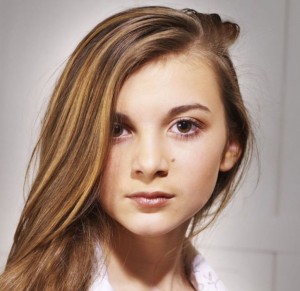 Tallulah Wilson was struck by a train at St Pancras Station, London. The sensitive 15-year-old schoolgirl and talented ballet dancer had been prescribed antidepressants while she was grieving for her grandmother. Two weeks before her death, she had taken an overdose of her medication. The doctor who treated Tallulah said that he “did not consider her to be a person at risk of suicide, but rather a person at risk of self-harm.”
Tallulah Wilson was struck by a train at St Pancras Station, London. The sensitive 15-year-old schoolgirl and talented ballet dancer had been prescribed antidepressants while she was grieving for her grandmother. Two weeks before her death, she had taken an overdose of her medication. The doctor who treated Tallulah said that he “did not consider her to be a person at risk of suicide, but rather a person at risk of self-harm.”
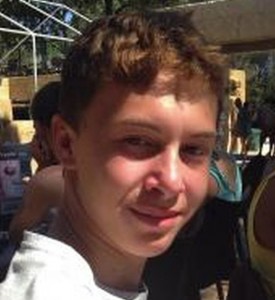 Patrick Roberts was also 15 when, after texting his friends, he hanged himself in a park near his Hertfordshire home, about a month after being prescribed Fluoxetine. He was described by his father as “a kind, gentle, fun-loving, very intelligent boy who was growing up to be a handsome, lovable young man with a keen sense of fun.”
Patrick Roberts was also 15 when, after texting his friends, he hanged himself in a park near his Hertfordshire home, about a month after being prescribed Fluoxetine. He was described by his father as “a kind, gentle, fun-loving, very intelligent boy who was growing up to be a handsome, lovable young man with a keen sense of fun.”
 Pauline Swatridge was 15 years old, multilingual, and had been assessed at her school in Bangor as bright, with a particular talent for art and music. Her inquest heard that “she had taken a variety of drugs prescribed to her by doctors for a mental illness” before jumping from the Menai Bridge.
Pauline Swatridge was 15 years old, multilingual, and had been assessed at her school in Bangor as bright, with a particular talent for art and music. Her inquest heard that “she had taken a variety of drugs prescribed to her by doctors for a mental illness” before jumping from the Menai Bridge.
 Alex Kelly was serving a 10 month sentence at Cookham Wood YOI for burglary and theft from a vehicle. The 15-year-old hanged himself in his cell after being “identified as being at risk of self harm.” After his death, a Serious Case Review revealed that he had “stopped taking his medication in the days prior to his death.”
Alex Kelly was serving a 10 month sentence at Cookham Wood YOI for burglary and theft from a vehicle. The 15-year-old hanged himself in his cell after being “identified as being at risk of self harm.” After his death, a Serious Case Review revealed that he had “stopped taking his medication in the days prior to his death.”
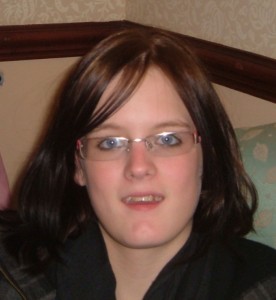 The Suffolk coroner was very critical of the long-term failure of Essex Social Care to look after 16-year-old Becky Watkins, who hanged herself at the children’s home where she ended up, despite the efforts of the staff there who did their best to help her. The inquest was told that Becky, who was born with a hole in her heart and had cerebral palsy, suffered with depression, bulimia and suicidal thoughts. A psychiatrist who had treated her told the inquest that Becky could be “delightful and caring” and was a “phenomenal singer with a beautiful smile.”
The Suffolk coroner was very critical of the long-term failure of Essex Social Care to look after 16-year-old Becky Watkins, who hanged herself at the children’s home where she ended up, despite the efforts of the staff there who did their best to help her. The inquest was told that Becky, who was born with a hole in her heart and had cerebral palsy, suffered with depression, bulimia and suicidal thoughts. A psychiatrist who had treated her told the inquest that Becky could be “delightful and caring” and was a “phenomenal singer with a beautiful smile.”
 Martha Bradbury was struck by a train at a London suburban station just a week after her 16th birthday. She had started self-harming, and was prescribed antidepressants. The following month, she took an overdose of her medication and was admitted to a residential centre. She had refused the offer of anti-psychotics, and was later discharged. A school-friend told the inquest that, before her death, Martha heard “bad” voices in her head and “really struggled” with the idea of it continuing for the rest of her life.
Martha Bradbury was struck by a train at a London suburban station just a week after her 16th birthday. She had started self-harming, and was prescribed antidepressants. The following month, she took an overdose of her medication and was admitted to a residential centre. She had refused the offer of anti-psychotics, and was later discharged. A school-friend told the inquest that, before her death, Martha heard “bad” voices in her head and “really struggled” with the idea of it continuing for the rest of her life.
A 16-year-old schoolgirl from Cambridgeshire had been taking Fluoxetine for 2 years, as prescribed by her GP. During the month before her death, she asked her doctor if she could change her Fluoxetine, as she felt it was making her worse. The medication was changed, and she subsequently died from an overdose of unprescribed medication.
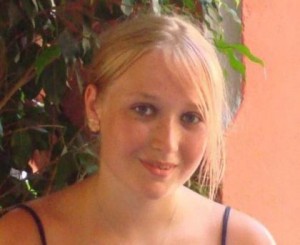 Dana Baker was 14 when she represented England at karate. However, it emerged later that she was being abused by her instructor. She was taken into care by Worcestershire Social Services and was prescribed antidepressants. At the age of 16, Dana hanged herself. At her inquest, the coroner decided that the authorities had breached her human rights by failing to provide her with proper care.
Dana Baker was 14 when she represented England at karate. However, it emerged later that she was being abused by her instructor. She was taken into care by Worcestershire Social Services and was prescribed antidepressants. At the age of 16, Dana hanged herself. At her inquest, the coroner decided that the authorities had breached her human rights by failing to provide her with proper care.
 Mary Stroman, 16, went to the same school as Tallulah Wilson (see above) and was a close friend. From June 2012 to March 2013, Mary had been treated for depression at a branch of the Priory in North London where, according to a Serious Case Review, “many therapeutic interventions were attempted.” While Tallulah’s inquest was taking place, Mary was at Tumblewood, a residential resource in Wiltshire. One evening, Mary walked out of the unit to a nearby railway line, where she was struck by a train.
Mary Stroman, 16, went to the same school as Tallulah Wilson (see above) and was a close friend. From June 2012 to March 2013, Mary had been treated for depression at a branch of the Priory in North London where, according to a Serious Case Review, “many therapeutic interventions were attempted.” While Tallulah’s inquest was taking place, Mary was at Tumblewood, a residential resource in Wiltshire. One evening, Mary walked out of the unit to a nearby railway line, where she was struck by a train.
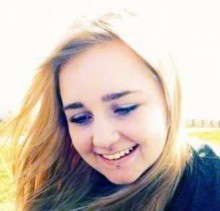 Lauren Johnson was a 17-year-old A-level student, described as “very intelligent and clearly articulate,” who wanted to be a clinical psychologist. However, she had been diagnosed at various times with “social anxiety” and “a personality disorder.” She was prescribed medication for her “low mood.” On her way to an interview for work experience, she walked to the top of a multi-storey car park in Accrington, and jumped off.
Lauren Johnson was a 17-year-old A-level student, described as “very intelligent and clearly articulate,” who wanted to be a clinical psychologist. However, she had been diagnosed at various times with “social anxiety” and “a personality disorder.” She was prescribed medication for her “low mood.” On her way to an interview for work experience, she walked to the top of a multi-storey car park in Accrington, and jumped off.
 17-year-old Michaela Christoforou hanged herself in a specialist treatment centre for eating disorders in North London. Her inquest was told that Michaela had a history of anorexia and severe depression and was known to be at a high risk of suicide. She had previously been treated by community care at home, where she took “an impulsive overdose” of her (unidentified) medication, and said that she worried about her suicidal thoughts and wanted help. A Serious Case Review later revealed that she had been prescribed Fluoxetine at the centre, and that the dosage was increased shortly before her death.
17-year-old Michaela Christoforou hanged herself in a specialist treatment centre for eating disorders in North London. Her inquest was told that Michaela had a history of anorexia and severe depression and was known to be at a high risk of suicide. She had previously been treated by community care at home, where she took “an impulsive overdose” of her (unidentified) medication, and said that she worried about her suicidal thoughts and wanted help. A Serious Case Review later revealed that she had been prescribed Fluoxetine at the centre, and that the dosage was increased shortly before her death.
There were many other inquests which were similar in nature to those that I featured above. In each of the following, however, there is no specific report in the press of antidepressants being prescribed, although it seems probable that psychiatric medication may well have had some involvement. What all these deaths have in common, however, is that in each case the victim was, or had been, receiving treatment from medical professionals at or before the time of their death.
 The youngest of these was Brendon Flynn, a 13-year-old schoolboy from Liverpool, who hanged himself at home. Brendon’s father said that “the family had concerns about his behaviour from an early age and he thought his son had depression.” Brendon was referred to the local Child and Adolescent Mental Health Service (CAMHS).
The youngest of these was Brendon Flynn, a 13-year-old schoolboy from Liverpool, who hanged himself at home. Brendon’s father said that “the family had concerns about his behaviour from an early age and he thought his son had depression.” Brendon was referred to the local Child and Adolescent Mental Health Service (CAMHS).
 14-year-old Severine Hobbs from Cambridgeshire had also been referred to the local CAMHS after being upset by bullying at school. 3 months before she took an overdose of Amitriptyline prescribed to her mother, the CAMHS had reported that Severine was a “moderate risk” to herself, and no further contact was made.
14-year-old Severine Hobbs from Cambridgeshire had also been referred to the local CAMHS after being upset by bullying at school. 3 months before she took an overdose of Amitriptyline prescribed to her mother, the CAMHS had reported that Severine was a “moderate risk” to herself, and no further contact was made.
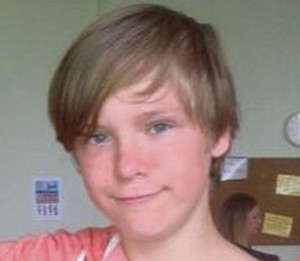 The mother of 14-year-old schoolboy Derek Brundrett, who had a “history of self-harming” and who then hanged himself, is taking Pembrokeshire County Council to court over the lack of support he was given. She said that “Derek had previously attempted suicide, had a history of self-harming which had been overlooked and attempts to get him help failed because he ‘did not meet the criteria’.”
The mother of 14-year-old schoolboy Derek Brundrett, who had a “history of self-harming” and who then hanged himself, is taking Pembrokeshire County Council to court over the lack of support he was given. She said that “Derek had previously attempted suicide, had a history of self-harming which had been overlooked and attempts to get him help failed because he ‘did not meet the criteria’.”
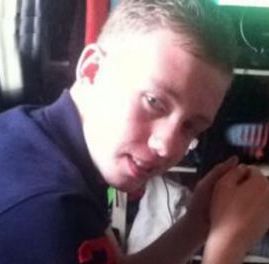 14-year-old schoolboy Liam Hardy was taken to a Surrey hospital twice within a short period after attempting suicide. On both occasions, he was discharged within hours, against his mother’s wishes. A few days later, he was found hanged in his bedroom. His inquest heard that social services were aware of Liam, who, as well as being epileptic, had displayed complex emotional and behavioural problems throughout his childhood. It was said that he would regularly self-harm and threaten to take his own life. At the time of his death, Liam and his girlfriend were expecting a baby.
14-year-old schoolboy Liam Hardy was taken to a Surrey hospital twice within a short period after attempting suicide. On both occasions, he was discharged within hours, against his mother’s wishes. A few days later, he was found hanged in his bedroom. His inquest heard that social services were aware of Liam, who, as well as being epileptic, had displayed complex emotional and behavioural problems throughout his childhood. It was said that he would regularly self-harm and threaten to take his own life. At the time of his death, Liam and his girlfriend were expecting a baby.
 Megan Edmunds from Birmingham was another 14-year-old to be found hanged in her bedroom. She had previously been sent to a pupil referral unit after being expelled from her school, and was also known to the local family planning services. Relatives told the inquest that “there was no reason for the bubbly outgoing teenager to have taken her own life.”
Megan Edmunds from Birmingham was another 14-year-old to be found hanged in her bedroom. She had previously been sent to a pupil referral unit after being expelled from her school, and was also known to the local family planning services. Relatives told the inquest that “there was no reason for the bubbly outgoing teenager to have taken her own life.”
 At the inquest of 15-year-old schoolgirl Ashli Blake, her GP stated that “she had suffered from low moods and sleeping problems.” She added that Ashli had previously been referred to the Hampshire CAMHS but had been discharged. After a row with her boyfriend, Ashli took her life by jumping from a tower in the Hampshire countryside near to her home.
At the inquest of 15-year-old schoolgirl Ashli Blake, her GP stated that “she had suffered from low moods and sleeping problems.” She added that Ashli had previously been referred to the Hampshire CAMHS but had been discharged. After a row with her boyfriend, Ashli took her life by jumping from a tower in the Hampshire countryside near to her home.
 15-year-old Bradley Adams from Manchester was a talented musician. He had experienced bullying and teasing at school, but had moved to another school where he was “a lot happier,” and where the headteacher described him as an “excellent student” and added: “He was very popular with other children and staff.” Bradley was found hanged in his bedroom, along with a moving suicide note in which he asked his family to give his possessions to those less fortunate than him. The inquest heard that Bradley had been suffering from depression and was receiving “specialist mental health treatment and support.” He was described by his mother as “the light of everyone’s life” who had been “receiving the correct support and help.”
15-year-old Bradley Adams from Manchester was a talented musician. He had experienced bullying and teasing at school, but had moved to another school where he was “a lot happier,” and where the headteacher described him as an “excellent student” and added: “He was very popular with other children and staff.” Bradley was found hanged in his bedroom, along with a moving suicide note in which he asked his family to give his possessions to those less fortunate than him. The inquest heard that Bradley had been suffering from depression and was receiving “specialist mental health treatment and support.” He was described by his mother as “the light of everyone’s life” who had been “receiving the correct support and help.”
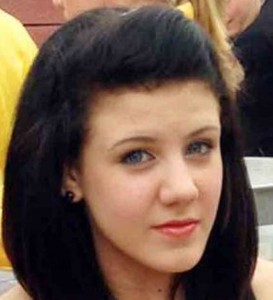 Charleigh Disbrey, a 15-year-old schoolgirl from Hertfordshire, went on to nearby railway tracks with her 18-year-old boyfriend, where they were both struck by a train. At the inquest, statements from mental health workers said that Charleigh “had been suffering from anxiety and depression for a number of months before the incident,” but none of them had deemed her to be in any immediate danger.
Charleigh Disbrey, a 15-year-old schoolgirl from Hertfordshire, went on to nearby railway tracks with her 18-year-old boyfriend, where they were both struck by a train. At the inquest, statements from mental health workers said that Charleigh “had been suffering from anxiety and depression for a number of months before the incident,” but none of them had deemed her to be in any immediate danger.
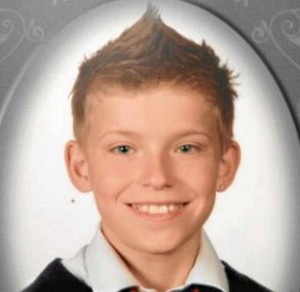 15-year-old Joshua Maddox hanged himself at his home in Walsall. He had been diagnosed as being autistic, and also suffered from ADHD. A psychiatrist told the inquest that: “Joshua had changed the medication he was taking for his ADHD in the weeks leading up to his death.”
15-year-old Joshua Maddox hanged himself at his home in Walsall. He had been diagnosed as being autistic, and also suffered from ADHD. A psychiatrist told the inquest that: “Joshua had changed the medication he was taking for his ADHD in the weeks leading up to his death.”
Gifted 15-year-old Stephanie Moreno became the third pupil in 2 years from her school in Bristol to die by hanging. Her inquest heard that her mood began to deteriorate and that she began to self-harm after her friend Chris hanged himself. The school arranged for her to have an appointment with the CAMHS, but Stephanie was apparently reluctant to have further appointments.
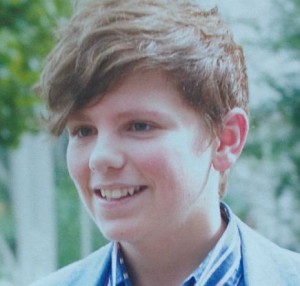 William Parlby Neale, described as “flamboyant and talented,” won a music scholarship to an exclusive boarding school. However, two terms later, he returned to his local Lincolnshire school after being physically and verbally bullied. Months after his return, at the age of 15, William hanged himself at home. His GP said at the inquest that he had been self-harming, had expressed suicidal thoughts, and he may have been suffering from OCD.
William Parlby Neale, described as “flamboyant and talented,” won a music scholarship to an exclusive boarding school. However, two terms later, he returned to his local Lincolnshire school after being physically and verbally bullied. Months after his return, at the age of 15, William hanged himself at home. His GP said at the inquest that he had been self-harming, had expressed suicidal thoughts, and he may have been suffering from OCD.
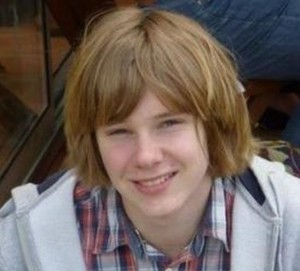 The inquest of 16-year-old Greater Manchester student Cameron Brookes heard that he had Asperger’s, which caused him difficulty in communicating and interacting with others. He battled depression and was crippled by a feeling that he didn’t belong, but he was “receiving treatment from family intervention workers and NHS professionals.” Cameron was found hanged in his bedroom.
The inquest of 16-year-old Greater Manchester student Cameron Brookes heard that he had Asperger’s, which caused him difficulty in communicating and interacting with others. He battled depression and was crippled by a feeling that he didn’t belong, but he was “receiving treatment from family intervention workers and NHS professionals.” Cameron was found hanged in his bedroom.
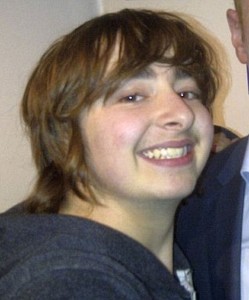 An inquest for 16-year-old Cheshire schoolboy Tom Acton heard that bullies at Tom’s school had forced him to take drugs, and had falsely branded him as a rapist. Days before he was due to testify at the trial of one of the bullies, Tom was found hanged in his bedroom by his father. Tom’s GP testified that: “He was struggling to concentrate and his mood was low; he described it as being dead inside,” while a friend stated that during the last month of his life Tom began to self-harm.
An inquest for 16-year-old Cheshire schoolboy Tom Acton heard that bullies at Tom’s school had forced him to take drugs, and had falsely branded him as a rapist. Days before he was due to testify at the trial of one of the bullies, Tom was found hanged in his bedroom by his father. Tom’s GP testified that: “He was struggling to concentrate and his mood was low; he described it as being dead inside,” while a friend stated that during the last month of his life Tom began to self-harm.
 Pasha Clark (16) from Cambridgeshire was described as a talented art student. Her inquest heard that she had suffered with mental health issues since she was around 13, and that she had self-harmed, taken overdoses and expressed suicidal thoughts. She “had received support from Mental Health services.” Pasha took an overdose of Propranolol.
Pasha Clark (16) from Cambridgeshire was described as a talented art student. Her inquest heard that she had suffered with mental health issues since she was around 13, and that she had self-harmed, taken overdoses and expressed suicidal thoughts. She “had received support from Mental Health services.” Pasha took an overdose of Propranolol.
 “Hard-working and talented” 16-year-old schoolboy Mohammed Razzak started to become more withdrawn and anxious as exams approached, and began to self-harm. After he missed a trial exam, child protection services and his school intervened and he spent a weekend in hospital where he was assessed by psychiatrists. After a few weeks, Mohammed told his GP that he had planned suicide six times in the past. Days later, he jumped from a bridge over the motorway near his Oldham home.
“Hard-working and talented” 16-year-old schoolboy Mohammed Razzak started to become more withdrawn and anxious as exams approached, and began to self-harm. After he missed a trial exam, child protection services and his school intervened and he spent a weekend in hospital where he was assessed by psychiatrists. After a few weeks, Mohammed told his GP that he had planned suicide six times in the past. Days later, he jumped from a bridge over the motorway near his Oldham home.
 16-year-old Daisy Holmes hanged herself in her flat in Hull. She was brought up by adoptive parent, and at the time of her death was an Army cadet, who wanted to be a medic in the armed forces. Her inquest heard that she had a history of self-harming and had tried to kill herself the previous year. A health visitor reported that Daisy also expressed suicidal thoughts from time to time.
16-year-old Daisy Holmes hanged herself in her flat in Hull. She was brought up by adoptive parent, and at the time of her death was an Army cadet, who wanted to be a medic in the armed forces. Her inquest heard that she had a history of self-harming and had tried to kill herself the previous year. A health visitor reported that Daisy also expressed suicidal thoughts from time to time.
Alex Philbey, 16, hanged himself in woods near his home in Cornwall. The inquest was told that his GP had referred him a few months earlier for sessions with the local CAMHS.
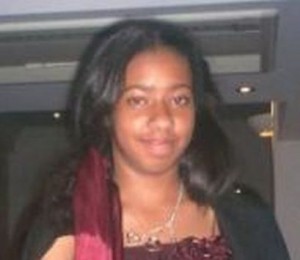 Sasha Steadman, a promising 16-year-old South London art student, died of a heroin overdose. At the time of her death, she was being supported by the local CAMHS. She was referred to the service by her GP, whom she visited after experiencing low moods and self-harming. A psychiatrist told her inquest that she used heroin “to relieve stress and improve her mood.”
Sasha Steadman, a promising 16-year-old South London art student, died of a heroin overdose. At the time of her death, she was being supported by the local CAMHS. She was referred to the service by her GP, whom she visited after experiencing low moods and self-harming. A psychiatrist told her inquest that she used heroin “to relieve stress and improve her mood.”
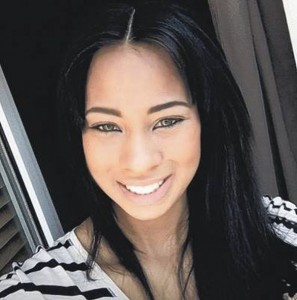 17-year-old care assistant Leigha Edwards was found hanged in her bedroom wardrobe at her home in Luton. At her inquest, the coroner said that Leigha had no history of mental illness, but had been encouraged to visit the doctor by her boyfriend where she complained of feeling anxious and depressed.
17-year-old care assistant Leigha Edwards was found hanged in her bedroom wardrobe at her home in Luton. At her inquest, the coroner said that Leigha had no history of mental illness, but had been encouraged to visit the doctor by her boyfriend where she complained of feeling anxious and depressed.
 When Jake Hardy arrived at Hindley YOI, it was the first time that the 17-year-old had been in custody. He had previously been diagnosed with ADHD and had recently self-harmed. Jake reported repeatedly that he was being bullied by other inmates. At a hearing 2 weeks before his death, it was recommended that Jake that should be transferred to a specialist unit elsewhere, but he was returned to Hindley. Jake damaged property in his cell and self-harmed; as a result, he began to be monitored. Initially he was put on 5 observations an hour but this was then reduced to 2 per hour. A few days later, Jake again damaged property in his cell and he was not allowed to make a call to his mother. Later that evening, a prison officer found Jake hanged.
When Jake Hardy arrived at Hindley YOI, it was the first time that the 17-year-old had been in custody. He had previously been diagnosed with ADHD and had recently self-harmed. Jake reported repeatedly that he was being bullied by other inmates. At a hearing 2 weeks before his death, it was recommended that Jake that should be transferred to a specialist unit elsewhere, but he was returned to Hindley. Jake damaged property in his cell and self-harmed; as a result, he began to be monitored. Initially he was put on 5 observations an hour but this was then reduced to 2 per hour. A few days later, Jake again damaged property in his cell and he was not allowed to make a call to his mother. Later that evening, a prison officer found Jake hanged.
All the children mentioned in the section above had been receiving treatment from their GP and/or from other local medical services. It is important, however, to re-emphasise that these children were not necessarily treated with Fluoxetine, or any other form of psychiatric medication.
It is also important to point out that a doctor or psychiatrist who prescribes Fluoxetine (Prozac) to a child under 18 years of age is not contravening the present NICE guidelines, as long as:
- the child meets the NICE threshold of suffering from moderate to severe depression, and
- the child has previously been offered a number of sessions of a specific psychological therapy.
However, I remain mystified that, for the past 10 years, neither NICE nor the MHRA have considered revising their guidelines, when by now they must be well aware of the irrationality of their original policy and of the corruption of the data that gave rise to it. Maybe, in 2015, somebody with influence at NICE or the MHRA will show some integrity and put right a wrong that continues to take the lives of our children.
And, in the meantime, it would help if our doctors and psychiatrists were to think of the possible consequences before reaching for the prescription pad, and if our coroners were to stop sweeping antidepressants under their carpets.
Top image: Train Tracks by Bob Dylan
Related Articles:
The Lost Children (2015, 2016, 2017 & 2018)
Why we shouldn’t give Prozac to children
Dana’s Human Rights – and ours
Were these children given Prozac?
Jake, Aged 14 (Part One, Part Two & Part Three)

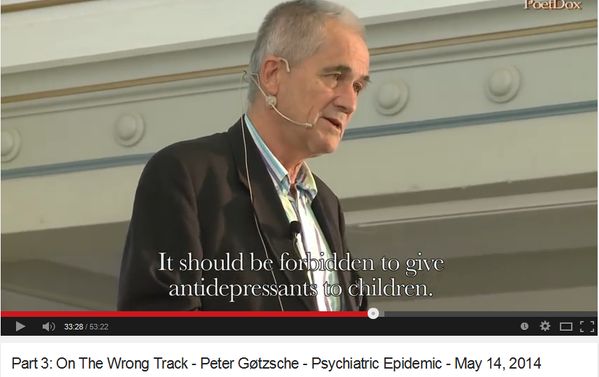
It should be illegal to give children of any age an Antidepressant! It is not okay that our children are murdering themselves because of the side effects; we also need to look at the huge amount of off-labelling prescribing going on with these meds…this seems to be acceptable in the medical profession, I really don’t understand why they need a licence in the first place when they can prescribe off-label!
They seem to give meds for everything, instead of allowing children to be children; understand their feelings and emotions.
Yes, life is hard at times when you’re a child, they think a break up in a relationship is the end of the world, they think exams are the worst thing ever…but no tablet or medication will change this.
Children don’t need to be fixed…just loved; nurtured…not numbed into a mindset where they feel they can’t go on. When my son (14) murdered himself on Prozac after 46 days, he was not in his right mind…how is this okay? Why oh why do the medical profession think this is okay?…Oh I know: greed, more greed, that’s why.
Stephanie, I wouldn’t know how many of these poor children actually had “moderate to severe depression” before taking antidepressants, or how many had been given sessions of counselling before a prescription was written. I suspect that not many children were treated as per the NICE guidelines.
Perhaps the coroners should be asking for this information, instead of blaming the Internet, relationship problems, other children, or anything else rather than the drugs.
Stephanie, my sister is one of these young people who took their own lives. Don’t believe everything you read. Her part was not true and wasn’t what happened. Children don’t just take their own lives because they’ve failed an exam.